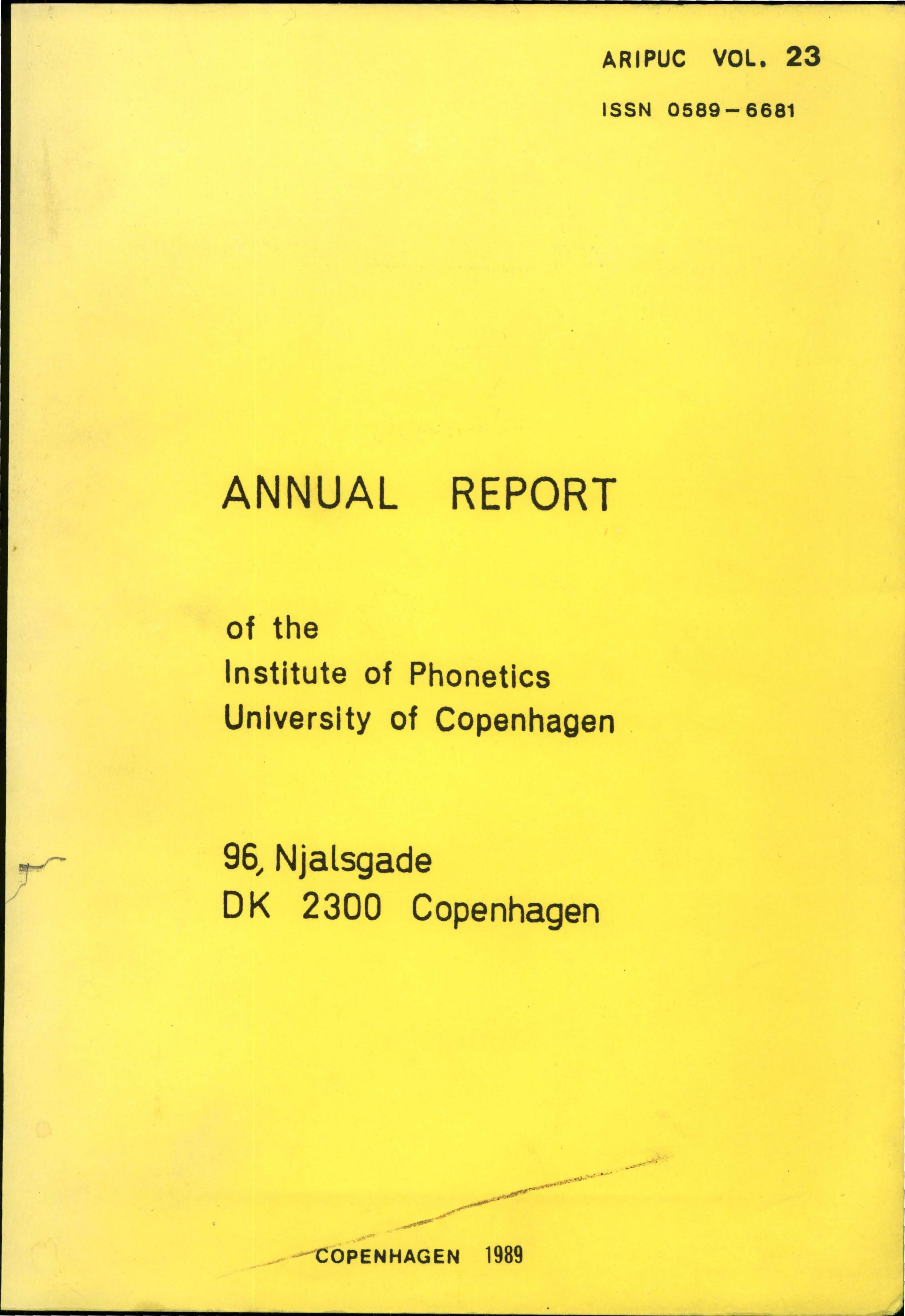Stress group patterns, sentence accents and sentence intonation in southern Jutland (Sønderborg and Tønder) - with a view to German
DOI:
https://doi.org/10.7146/aripuc.v23i.131902Abstract
This paper investigates prosodic stress group patterns, the presence and manifestation of default and focal sentence accents and the nature of sentence intonation signalling in Standard Danish spoken on a substratum of South Jutland dialects, viz. Sønderborg and Tønder, and in two varieties of German, Standard North German and Flensburg. The following facts appear: sentence intonation (understood to encompass both utterance function and utterance juncture) is signalled globally in Tønder, locally in Sønderborg, and with a mixture of global and local signalling in German. Default accents are nonexistent in the two Danish varieties, optional in German. Focus is signalled, optionally (and never in final position), by stress reduction of the surroundings in the Danish regions, but is compulsory and takes the shape of a proper sentence accent, though modest, in German. Sønderborg and German have unambiguous final lengthening, whereas both lengthening and shortening finally occurs in Tønder. Prosodic stress group patterns suffer a clean truncation when their duration is shortened in the Danish regions, but a mixture of compression and truncation in German. Finally, Tønder has stød, Sønderborg and (of course) German do not.
Downloads
Published
How to Cite
Issue
Section
License
Copyright holder author

